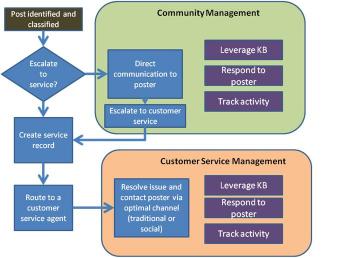Taming The Social Voice With Consistency Of Process Between Communication Channels
Part of managing your brand is making sure that your customer service experience is consistent across all touchpoints that you use to interact with a company – traditional ones such as voice, email, chat, web self-service and now the social interaction channels.
What does a "consistency of experience" mean? It means that:
- The knowledge a customer or agent has access to must convey the same message across all touchpoints. The voice will understandably be different for, for example, a chat session and an email session.
- The agent must have a full view of the customer’s interactions across all touchpoints — traditional and social ones. Another way of saying this is that customer data should not live in independent technology silos.
- The processes that an agent follows must be the same for interactions coming in across all touchpoints — traditional and social.
This last point is one that takes a lot of foresight in managing social interactions. First, you must separate the noise from actual requests for help. Next, you must determine who in the organization is best suited to help answer the request, which could be a community manager or a customer service representative.
Here is an example of a level process flow:

What is exciting is when a vendor bakes a process flow like this into their products in order to enable a consistency of voice. Attensity has done just that with the release of their Attensity Respond for Social Media. This solution, in concert with Attensity 360, is able to listen to conversations, separate the noise from the important chatter, categorize the chatter (e.g., is it a customer service issue, a compliment, a request for new feature) and route the issue, via predefined rules, to the right responder queue to be answered. The responder, either a customer service rep or community manager, can answer the question and communicate the answer back via the optimal social channel. Conversations can be tracked and reported on, and private notes can be appended to conversations.
This product can be integrated with multichannel CRM systems, and this is where it gets interesting. You can associate social handles with customer records so that customer history contains a set of all social and traditional service interactions. More than that, social customer service requests can be closed out over traditional channels like email, if needed.
I look forward to seeing what customers who use this solution think about it.
And if you want another view of this topic, check out Esteban Kolsky's post on the social consumer.
